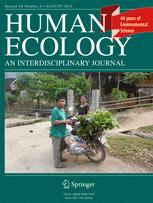Resource information
The conservation of scarce land resources is essential to the long-term viability of agriculture in Rwanda. High population density, steep slopes, and abundant rainfall prevail in the highland portions of this African country, making the task of erosion control uncommonly difficult for the peasant farmer. The specific use to which land is put, e.g., cultivation, fallow, pasture, woodlots, and, if it is cultivated, the particular combination of crops grown, can be seen as contributing to both the cause and the solution of the land degradation problem. Based on data from a nationwide survey of over 4800 agricultural fields in Rwanda, this study reviews the extent to which the land use and cropping patterns employed by farmers are appropriately suited, in terms of erosion control, to the topographical and environmental characteristics of their landholdings. Analyses of other aspects of the traditional agricultural system, e.g., variations in relative soil fertility, the use of organic fertilizers, and the location of fields relative to the household, are introduced to help explain why farmers often fail to maximize erosion control through land use and cropping practices. Adjustments to current land use practices that can be expected to reduce soil loss are discussed.


